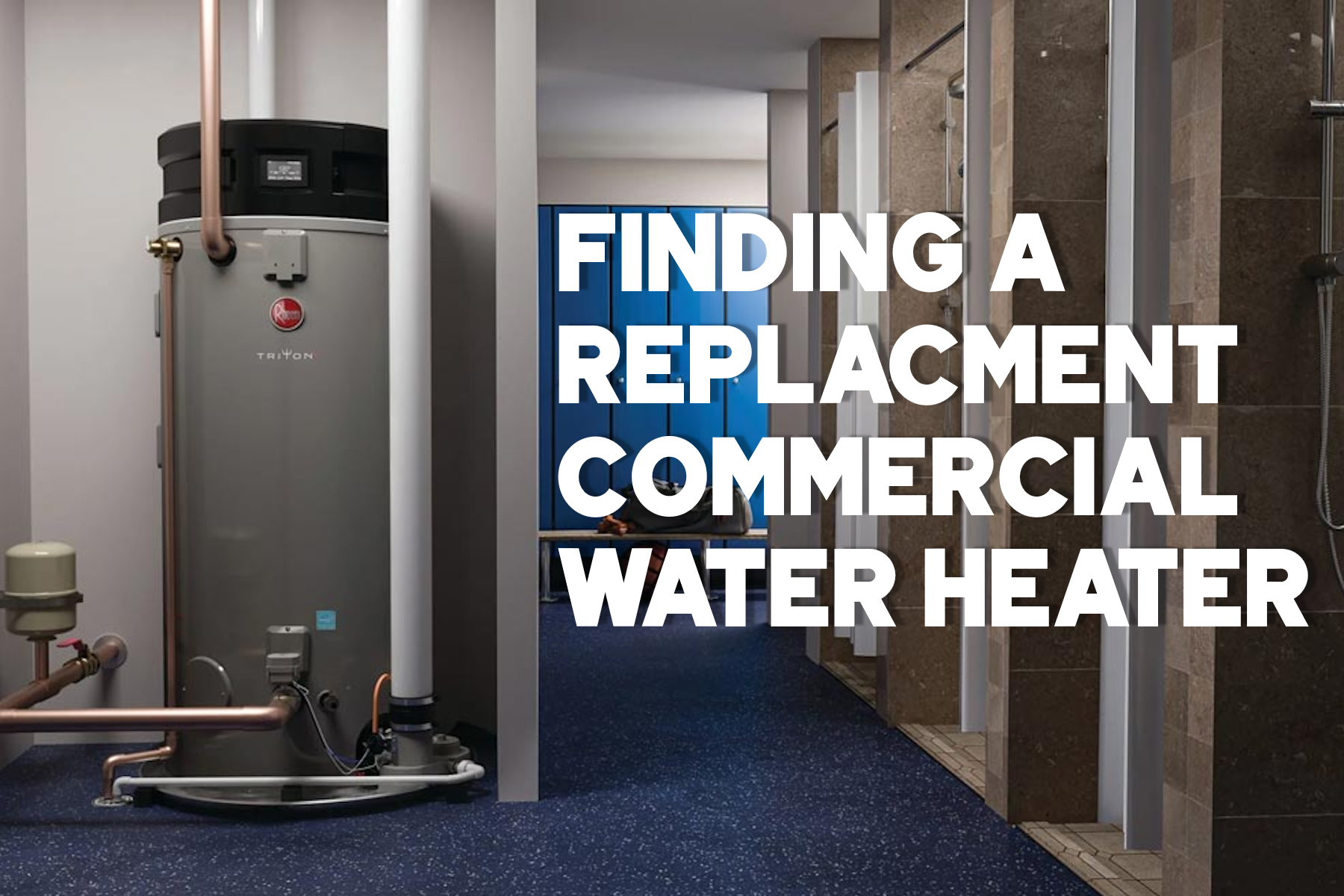
Finding a Replacement Commercial Water Heater
| Noah Beson
When it comes to the smooth operation of any commercial establishment, few things are as crucial as a reliable water heater. Whether it's a bustling restaurant, a busy office building, or a sprawling hotel, access to hot water is not just a convenience but often a necessity for daily operations. However, when the time comes to replace an aging or malfunctioning commercial water heater, the task can seem daunting. With a myriad of options available on the market, finding the right replacement requires careful consideration of various factors, including capacity, efficiency, and budget. In this article, we'll explore the key steps and considerations involved in finding a replacement commercial water heater to ensure that your business continues to run smoothly without interruption.
Finding your old model number and manufacturer.
The first step in finding a replacement for your old water heater is to determine the model number and manufacturer. You can find this information on the water heaters rating plate/sticker. This is typically located on the front or side of the water heater and has information on it such as the model number, serial number, and technical specifications.

With this information you can use our replacement finder to find a comparable model which Rheem manufactures. Or you can also look that model number up online and find the technical specifications which will be imperative in finding your new water heater.
Replacement Finder: https://wholesalewaterheater.com/pages/replacement-finder

What matters.
When it comes to technical specifications there are a few key components that matter when purchasing a new unit. These are vent size, vent type, dimensions, connection sizes, BTUs, and tank size.
Vent Size
When replacing a water heater, it is important to ensure you don’t need to redo all your vent, especially if you have a long vent that would be tricky to replace. On a water heaters specification sheet there is typically a section in the dimensions chart which will show the vent size.
In this chart we can look at the water heater diagram and see that the letter “E” signifies the vent connection. If we then look at the dimension chart, we can see that in column “E” it says 5, which means this specific model has a 5” vent. With this information we know that we will either want a 5” or smaller vent. You can always reduce a vent down you can never increase it, if you need something larger than 5” on this water heater you’d need to replace all of the venting to the larger size.
Vent Type
There are two primary vent types in the world of commercial water heaters, those are atmospheric and power vent. An atmospheric vent water heater is the most basic type of commercial water heater you can buy. This venting system is simple and inexpensive, however typically results in a lower efficiency rating, and increased operational costs. Additionally, this form of venting is typically venting with a chimney-style flue that goes out through the roof.
The power-vent water heaters are top of the line high-efficiency models, which have lower operational costs. These water heaters have a motorized fan which helps push out fumes/emissions. Additionally, these heaters can be vented with smaller PVC pipe and can be placed horizontally if needed.
An easy way to tell what type your water heater is, is by looking at the venting coming from your water heater. If it’s metal it’s an atmospheric vent, and if it’s plastic it’s a power-vent. It is typically easy to convert from an atmospheric vent to a power-vent, but not vice versa. This is because you could simply run the smaller power-vent PVC pipe through the larger atmospheric vent. However, you could not easily do this the other way around.
Dimensions
If you have a tight space, it also will be crucial to double check the dimensions of the water heater. Different water heaters can have drastically different dimensions, even if they have the same tank capacity. The first step you’ll want to take is either finding your old water heaters measurements on the specification sheet in the same section you found the vent size earlier, or you can physically measure your water heater and room size to be extra safe.
Outside of just making sure the water heater will fit in your space, having your replacement water heater comparable in size to your old water heater will also make the replacement easier. If you get a water heater which is drastically shorter or taller than adjustments will need to be made to the vent, water connections, and gas connections to line up and fit onto your new heater.
Connections
Regarding connections, there are two main connections we’ll be looking at; that is the water inlet/outlets where your cold water comes in and your hot water comes out, and the gas line connection. Typically, on the dimensions chart we can find these water and gas connections. On Rheem specification sheets the water connections are shown in separate columns, indicating the top, front, and rear water connections. It is important to look at your old water heater and see how it is connected. These connection sizes sometimes vary. For example, on a Rheem G100-200 the top connections are 1-1/2” and the front and rear connections are 2”.
On this chart the gas connection is indicated by column “G” which is 3/4". That size is quite standard for commercial units; however, some larger units can get up to 1”.
BTUs
When it comes to how much hot water a certain model can make, the BTU rating is the largest contributing factor to this. The higher the BTUs a water heater has the more gallons per hour it will recover. Typically to determine how many BTUs you will need you calculate how many fixtures will be running simultaneously, and how many gallons per hour you will need to account for this hot water usage. However, since we’re replacing a unit, we can typically just go with whatever the currently instead unit is since that is what was originally sized for your business. If you noticed hot water running out with your current unit, or you’ve added additional fixtures needing hot water since the original construction you may need to increase the number of BTUs on your replacement unit. However, please note if doing this you may need to change your venting, as typically the vent gets bigger as the BTUs do.
To give you an example look at the chart below which shows various models and their BTU ratings. The higher the BTUs the higher the recovery rate. Additionally, while reading these recovery capacity charts it’s important to note that recovery is not only based on BTU but also on the temperature rise. For example, if you’re only heating the water up 50 degrees from the in-ground water temperature you will heat water a lot quicker than if you were heating the water up 100 degrees.

Tank Size
Many people focus on the tank size when choosing a water heater but is not nearly as important as the BTU rating. The tank of a water heater allows for additional instantly accessible water. The largest impact a tank makes is your first-hour delivery rate. For companies, especially in the hotel industry, a lot of hot water is used all at once in the morning since most guests wake up and then start using fixtures like showers/sinks at a similar time. This means that the water heater may be in a lot of demand for the first couple of hours in the morning. Having a tank on your water heater allows you to deliver not only the amount it can recover each hour but also the number of gallons in the tank. Once that tank is depleted you will then start to rely on the recovery rate which is determined on the BTU rating as mentioned before.
Conclusion
Choosing a replacement commercial water heater is a decision that should not be taken lightly. It's an investment in the comfort and efficiency of your establishment, as well as the satisfaction of your customers or tenants. By thoroughly assessing your needs, considering factors such as vent size, btu, dimensions, connections, tank size, and exploring the range of options available, you can find a replacement water heater that meets your requirements and provides reliable hot water for years to come. Remember, the right water heater is not just a piece of equipment—it's a vital component of your business infrastructure. So take the time to make an informed decision, and enjoy the benefits of uninterrupted hot water for your commercial space. If you're having trouble finding the right replacement contact us at (248) 892-1000.







